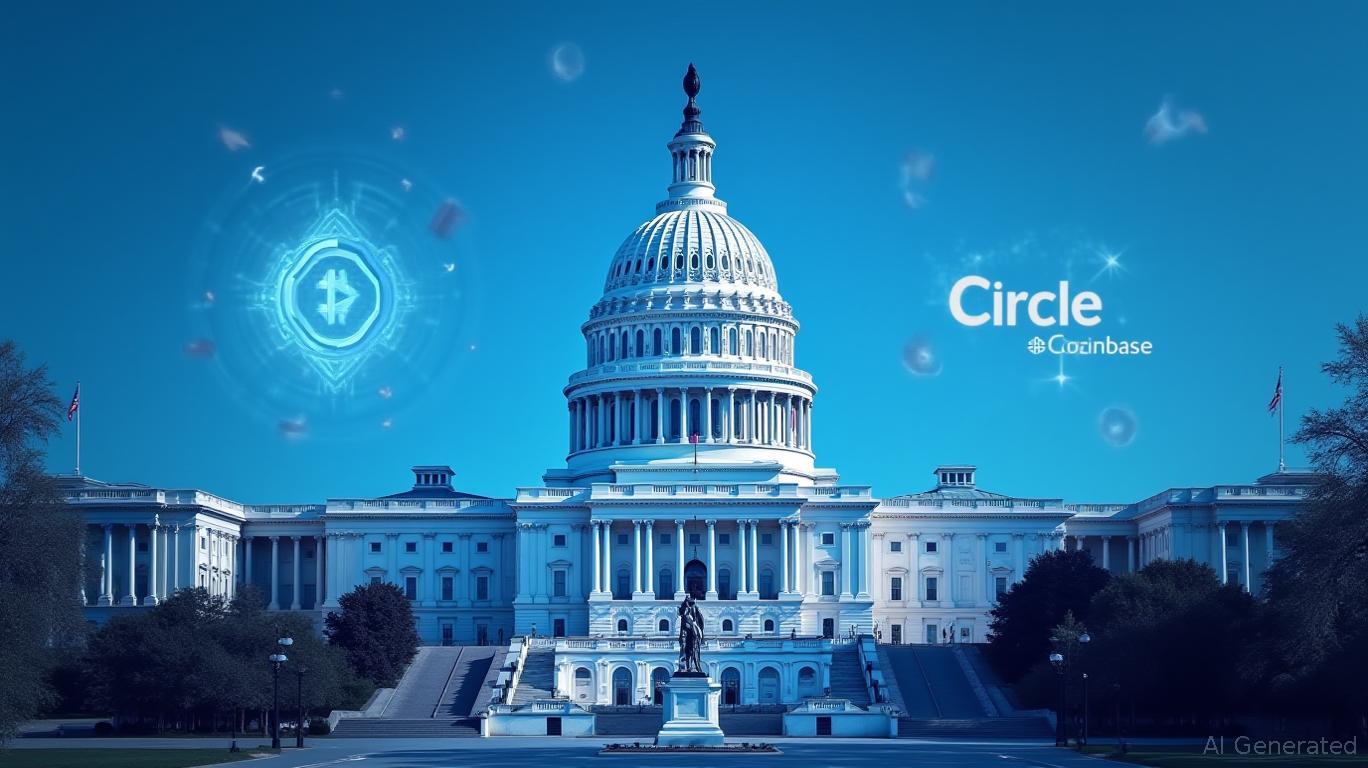Stablecoin Issuers: Riding Regulatory Tailwinds to a $2 Trillion Future
The Senate's recent passage of the GENIUS Act marks a pivotal moment for the $2 trillion stablecoin market, creating a regulatory framework that could finally solidify the role of dollar-pegged digital currencies in the global financial system. Among the key beneficiaries of this legislative progress are issuers like Circle Internet Group (CRCL), which has partnered with Coinbase to dominate the U.S. dollar-backed stablecoin space. With the Treasury Department poised to centralize oversight and T-bill backing mechanics reinforcing trust, this is a critical inflection point for investors seeking exposure to the digital dollar's rise. But as with all disruptive innovations, risks lurk beneath the surface.
Regulatory Tailwinds: From Chaos to Clarity
The GENIUS Act, passed by the Senate in February 2025 with a 68-30 vote, establishes the first federal framework for stablecoins, mandating reserves equal to their value, monthly audits, and anti-money laundering compliance. While the House's competing STABLE Act seeks to distribute regulatory authority across agencies, the Senate's version grants the Treasury Department central oversight—a win for issuers like Circle, which already aligns its operations with Treasury standards. The legislation's passage was no accident: crypto firms spent $250 million in lobbying during the 2024 election cycle, signaling their intent to shape a rules-based ecosystem.
For investors, this clarity is transformative. The Act's provisions—such as requiring issuers exceeding a $10 billion market cap to transition to federal oversight—create a “moat” for established players like Circle, whose USD Coin (USDC) already holds 40% of the stablecoin market. Meanwhile, non-financial tech giants (e.g., Meta, Amazon) must now partner with regulated entities to issue stablecoins, limiting competition and reinforcing Circle's position as a gatekeeper.
Note: Circle's stock has underperformed equities broadly in recent years but could outperform if the GENIUS Act passes.
The Mechanics of Trust: T-Bills and Dollar Hegemony
Circle's success hinges on its T-bill-backed USDC, which offers a safer alternative to rival stablecoins like Tether (USDT), whose reserves remain opaque. By collateralizing USDC with short-term Treasuries, Circle aligns its offering with the Treasury's vision of “digital dollar hegemony”—a system where the U.S. dollar's dominance is preserved in the digital age. The Treasury's oversight under the GENIUS Act further entrenches this advantage, as institutional investors increasingly demand transparency and regulatory backing.
This dynamic creates a virtuous cycle: as USDC adoption grows, Circle's market share expands, attracting more institutional capital, which in turn strengthens its lobbying power and regulatory standing. JPMorgan and Bank of America's exploration of stablecoin integration underscores the broader financial system's embrace of this model.
Strategic Investment Opportunities
For investors, Circle (CRCL) stands out as the purest play on this theme. Key entry points include:
1. Pre-House Passage Rally: If the House reconciles differences with the Senate's bill by summer, expect a pop in CRCL as regulatory uncertainty fades.
2. Partnership Announcements: Monitor Circle's collaborations with banks or retailers (e.g., Shopify's USDC-based payments) as they signal expanding use cases.
3. Market Cap Milestones: The $10 billion regulatory threshold could drive share buybacks or dividends once met, rewarding long-term holders.

Risks and Uncertainties
While the GENIUS Act's passage is likely, risks remain:
- House Amendments: The STABLE Act's push for multi-agency oversight could dilute the Treasury's role, creating regulatory fragmentation.
- Political Fallout: Critics like Sen. Jeff Merkley have already raised ethical concerns over President Trump's crypto profits, which could delay the bill or spur punitive amendments.
- Global Competition: China's digital yuan and Eurozone initiatives threaten U.S. dominance, though T-bill backing and dollar credibility provide a buffer.
Conclusion: A Balanced Bet on the Digital Dollar
The stablecoin market's projected $2 trillion growth is real, but its trajectory hinges on execution. Circle's USDC, with its Treasury-aligned model and Coinbase partnership, is positioned to lead—but investors must remain vigilant. A 5-10% allocation to CRCL, paired with regular monitoring of regulatory progress and geopolitical developments, offers a compelling risk-reward trade. As the saying goes: in finance, the best opportunities lie where regulation meets innovation. This is one of them.
Note: USDC's lead over Tether (USDT) has narrowed in recent quarters, reflecting investor demand for transparency.
Disclosure: This analysis is for informational purposes only and does not constitute financial advice. Consult with a licensed professional before making investment decisions.

Comments
No comments yet